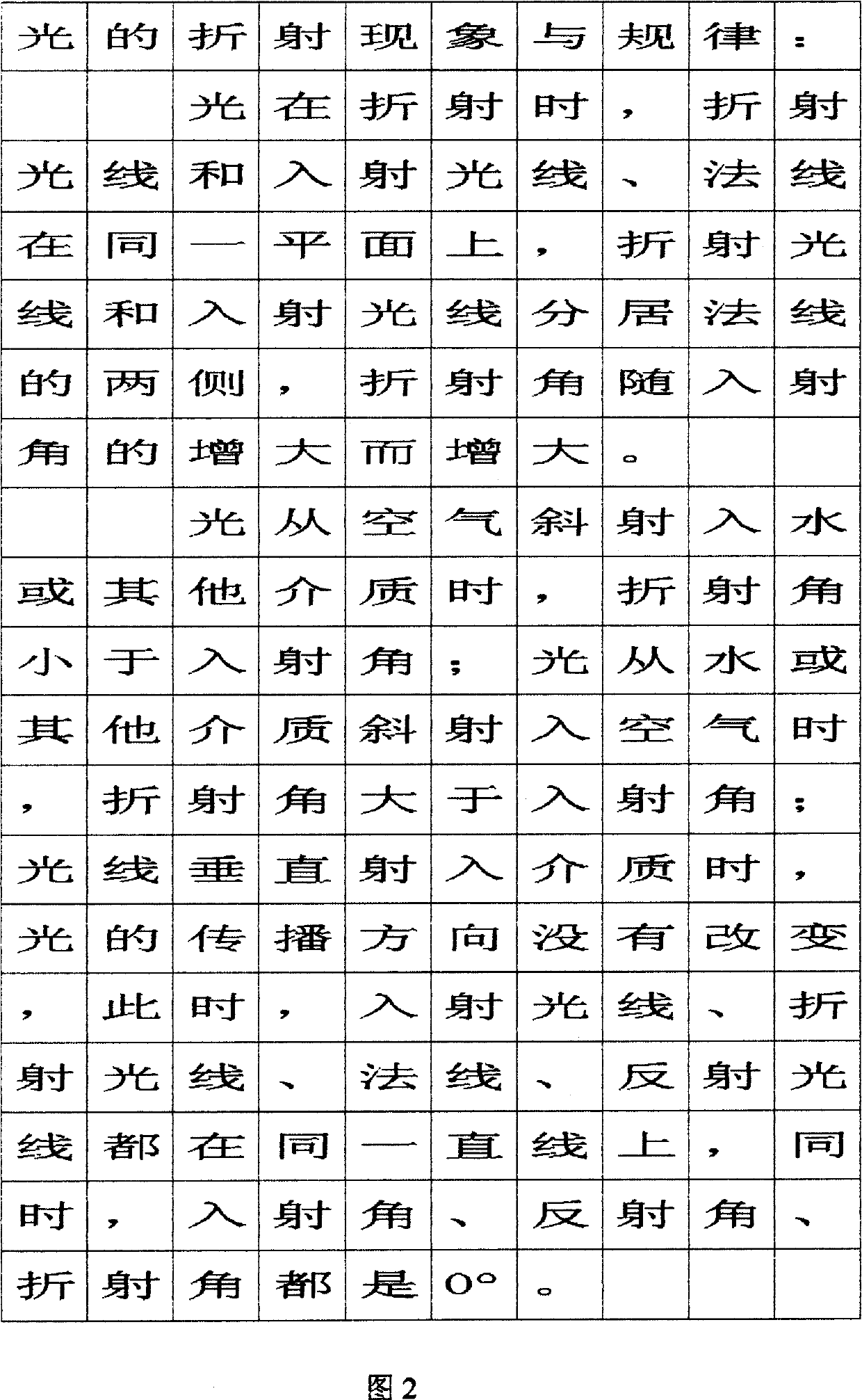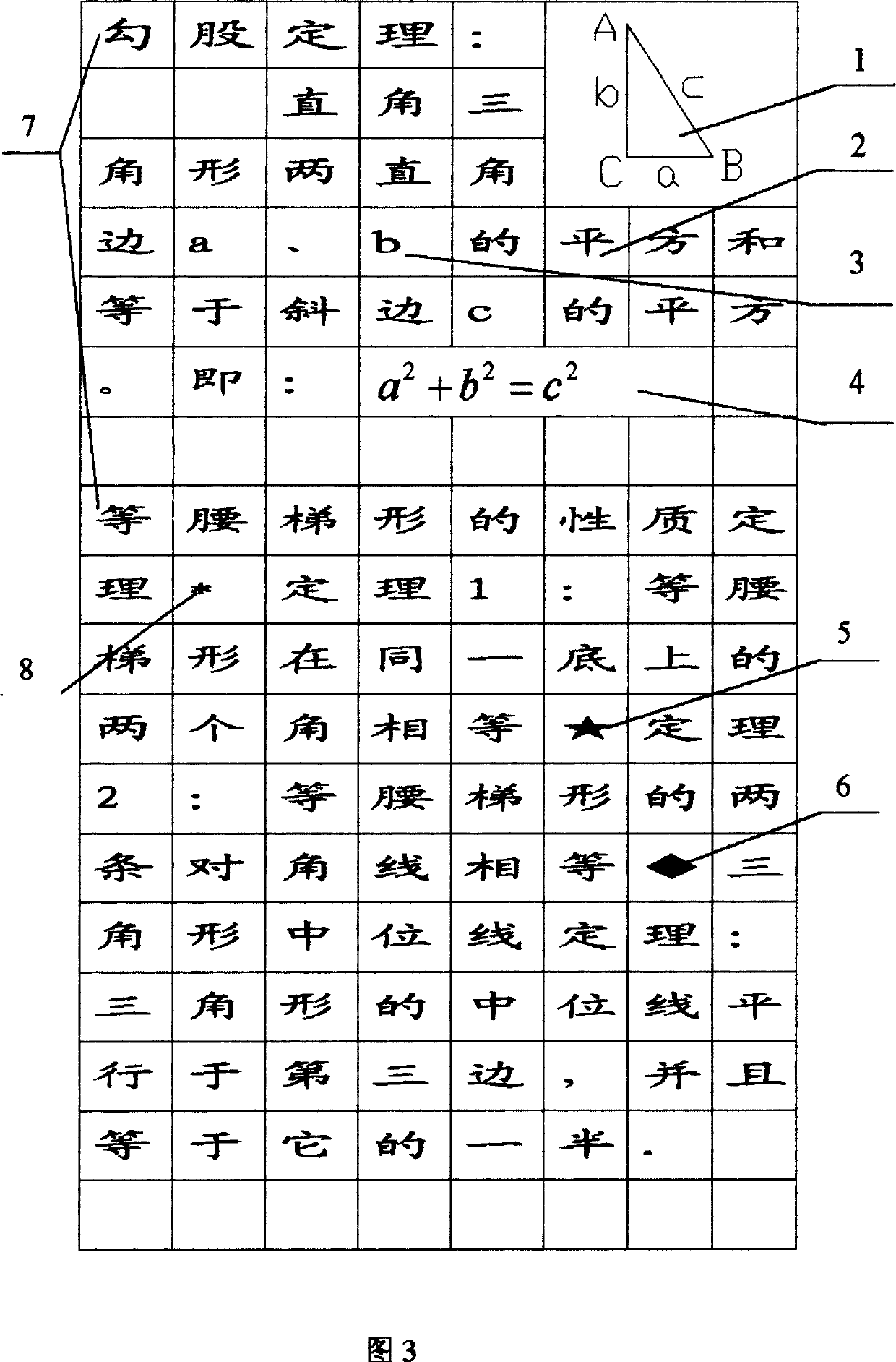Studying copybook for calligraphy
A technology of copybooks and characters, which is applied in the direction of educational appliances, instruments, teaching aids, etc., can solve the problems of not being able to learn, lack of knowledge, helping targeted students, and students only love calligraphy, etc., to improve learning interest and overall book More coordinated and aesthetically pleasing, more fun and more efficient effects
- Summary
- Abstract
- Description
- Claims
- Application Information
AI Technical Summary
Problems solved by technology
Method used
Image
Examples
Embodiment 1
[0014] Embodiment one: Figure 1 of the accompanying drawings shows a typical implementation example: the content of the copybook text is respectively "the Pythagorean theorem and the mathematical expression of the Pythagorean theorem and the graphics involved in the Pythagorean theorem", "the isosceles trapezoid Property Theorem" and "Triangle Median Theorem" and their expressions. The font of the copybook is "Calibration", through the "Pythagorean Theorem and the Mathematical Expression of the Pythagorean Theorem", "The Property Theorem of Isosceles Trapezoid" and "The Triangle Median Line Theorem" and the words expressed in this font Writing exercises to achieve conscious and unconscious memory, understanding, and mastery of "Pythagorean theorem and its numerical expression", "property theorem of isosceles trapezoid" and "triangle median line theorem" and their expressions.
[0015] On the contrary, you can also use "Pythagorean theorem and its mathematical expression", "the...
Embodiment 2
[0016] Embodiment 2, as shown in Figure 2 of the accompanying drawings of the description, is also a typical implementation example: the difference from "Embodiment 1" is that the content of the text is the expression of "the refraction phenomenon and law of light" in the physics textbook, and the font is "Chinese Xingkai ", the font size is "No. 4", then what you have learned is the corresponding knowledge of the refraction phenomenon and law of light in the "Hua Wen Xing Kai" calligraphy and physics textbooks.
Embodiment 3
[0017] Embodiment 3, as shown in Fig. 3 of the accompanying drawings of the description, is also a typical implementation example: the content, font, and font size of the text are the same as those in Fig. 1. with Symbols are used to identify the title and content of the theorem. The symbol "*" is used to identify the theorem title and the theorem content. "The "*" symbol is used to identify, and the "Theorem 1..." is not added. This embodiment is to implement different typesetting formats, of course, you can also use "vertical line", "thick vertical line", "slash" and other symbols to mark, symbols separate marks, can mark different content, and can also save space space . Introduced some layouts here, although the copybooks in the prior art are also through typesetting, due to the characteristics of the text content of the copybooks of the present invention, some relatively special layouts (such as color typesetting) need to be adopted to separate each relatively indepe...
PUM
 Login to View More
Login to View More Abstract
Description
Claims
Application Information
 Login to View More
Login to View More - R&D Engineer
- R&D Manager
- IP Professional
- Industry Leading Data Capabilities
- Powerful AI technology
- Patent DNA Extraction
Browse by: Latest US Patents, China's latest patents, Technical Efficacy Thesaurus, Application Domain, Technology Topic, Popular Technical Reports.
© 2024 PatSnap. All rights reserved.Legal|Privacy policy|Modern Slavery Act Transparency Statement|Sitemap|About US| Contact US: help@patsnap.com










